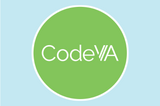
Recognizing and describing part-whole relationships for numbers up to 10 Mathematics Instructional Plan
- Subject:
- Mathematics
- Material Type:
- Lesson Plan
- Provider:
- VDOE
- Author:
- VDOE
- Date Added:
- 10/03/2024

Recognizing and describing part-whole relationships for numbers up to 10 Mathematics Instructional Plan

Recognizing and describing part-whole relationships for numbers up to 10 Mathematics Instructional Plan

Part-Whole Relationships for Numbers to 10 Formative Assessment - Just in Time Quick Check, Teacher Notes, and Supporting Resources

Recognizing and describing part-whole relationships for numbers up to 10 Mathematics Instructional Plan

Recognizing and describing part-whole relationships for numbers up to 10 Mathematics Instructional Plan

Using relationship between addition and subtraction; Developing fluency with addition and subtraction within 10 - Mathematics Instructional Plan

Addition and Subtraction within 10 Formative Assessment - Just in Time Quick Check, Teacher Notes, and Supporting Resources

Determining value of a collection of like coins - 100 cents or less - Mathematics Instructional Plan

Value of Collection of Like Coins Formative Assessment - Just in Time Quick Check, Teacher Notes, and Supporting Resources

Time to the Hour and Half-Hour Formative Assessment - Just in Time Quick Check, Teacher Notes, and Supporting Resources

Telling time to the hour and half-hour Mathematics Instructional Plan

Read and interpret a calendar - Mathematics Instructional Plan

Read and Interpret a Calendar Formative Assessment - Just in Time Quick Check, Teacher Notes, and Supporting Resources

Purpose & SOL
Students will be able to read and write numerals 0-120 in sequence and out of sequence (1.NS.2a)

Computer Science Standard Alignment Guides are resources for teachers working to integrate computer science into their core curriculum. These guides explain the standard, give a sample activity or lesson that teaches the standard, and ways to measure student proficiency on the skill or concept.

The Computer Science Office in Loudoun County Public Schools has developed this curriculum integration document to support the integration of the 2017 Virginia Computer Science Standards into core subject areas and beyond. Each CS standard was aligned to up to 3 grade level standards that made natural correlations.Additionally, many activities and resources were included to each standard to support the introduction and integration of the standard. For each of the six strands of the Computer Science Standards of Learning: Computing Systems, Networks and the Internet, Cybersecurity, Data and Analysis, Algorithms and Programming, and Impacts of Computing, we have included tiered support called "Fuel", "Spark", and "Ignite". The "Fuel" is provided to build teacher capacity and students' understanding in understanding the CS SOL. The "Spark" provides a Computer Science integrated experience into a core or speciality subject SOL. The "Ignite" section is where teachers in Loudoun County have the opportunity to share authentic learning experiences and lessons in our LCPS Computer Science Lesson Repository.This document was created as part of the Virginia K-12 Computer Science Pipeline which is partly funded through a GOVA and DHCD grant in partnership with Chesapeake Public Schools, Loudoun County Public Schools, and the Loudoun Education Foundation.

Midterm examination for a class at MIT covering game theory and its applications to economics. The one-hour-and-twenty-minute open book examination asks open ended theoretical questions. The exam contains questions and solutions.

Symmetrical Cube Designs Mathematics Instructional Plan

Symmetrical Shape Fun Mathematics Instructional Plan

The Shape Show Mathematics Instructional Plan